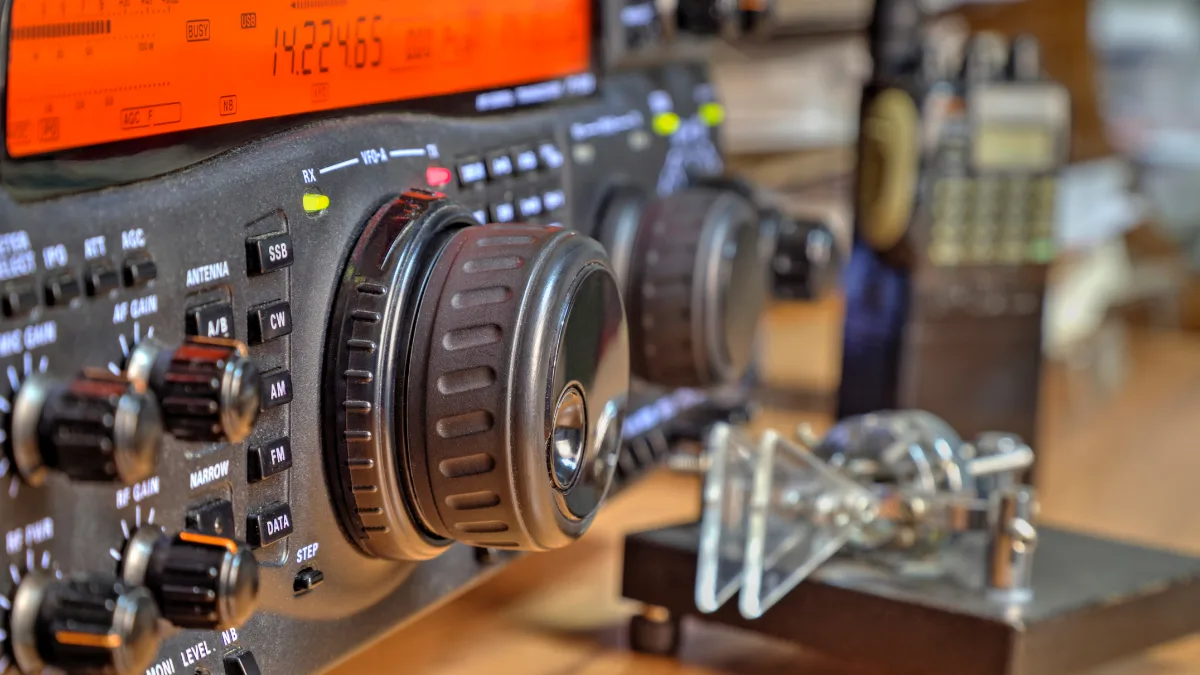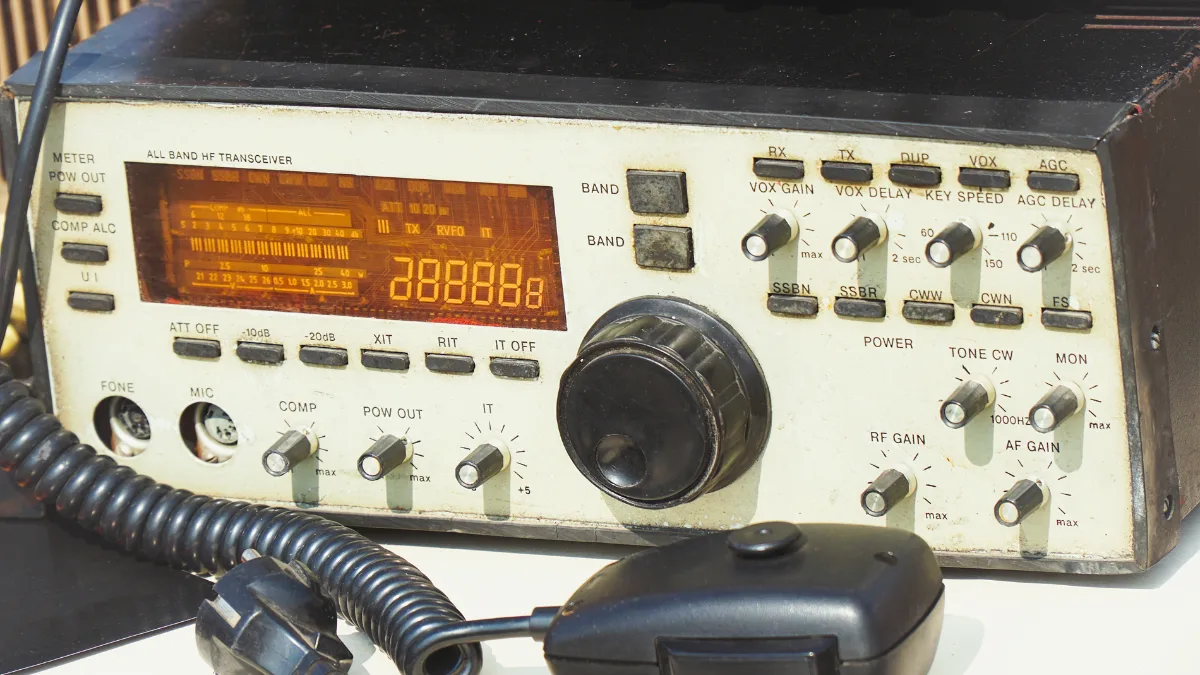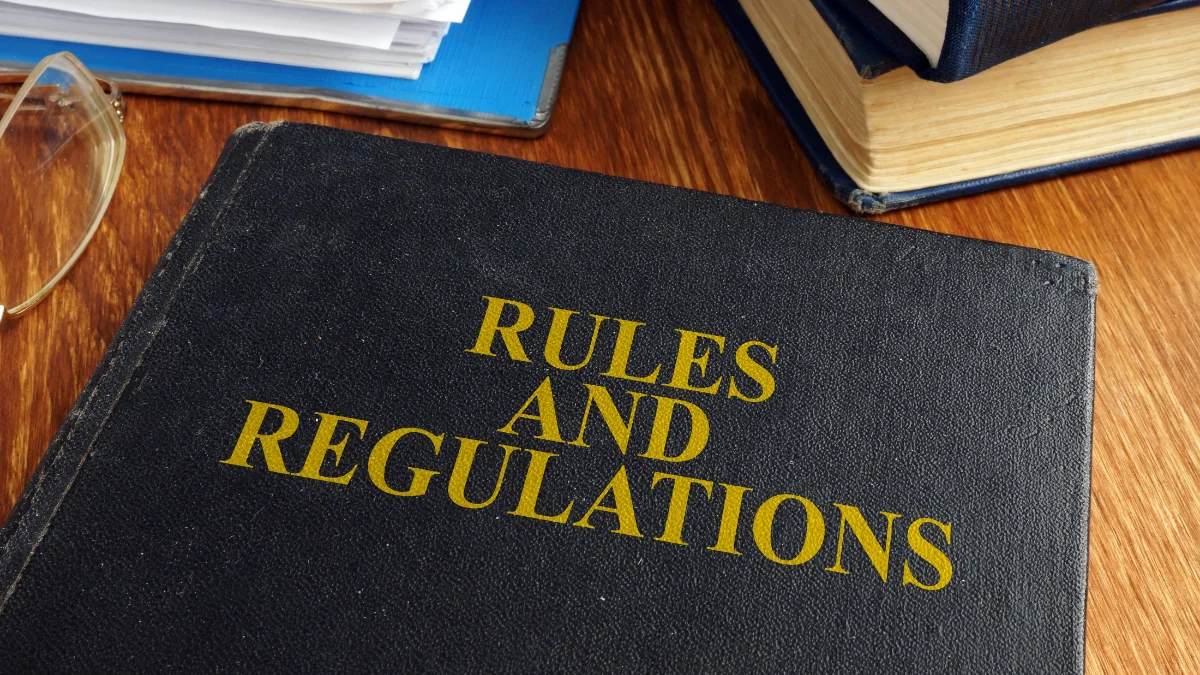An amateur radio transceiver is a very useful device that can be used for two-way communication in emergencies.
An amateur radio transceiver is a device that can transmit voice signals into radio signals and receive radio signals back into audio signals.
Are you familiar with this device? This article will help you learn more about amateur radio transceivers, including their definition, functions, examples of applications, and regulations for their use in Indonesia.
What is an Amateur Radio Transceiver?

An amateur radio transceiver is a single electronic device that combines the functions of a transmitter and a receiver. This device allows users to send and receive radio signals simultaneously.
The transmitter converts audio signals into radio waves that are transmitted through the antenna. The receiver, on the other hand, receives radio waves from the antenna and converts them back into audio signals.
The transceiver is the most important device in an amateur radio station, as communication would not be possible without it.
The Functions of an Amateur Radio Transceiver

The main function of an amateur radio transceiver is to enable two-way communication. The following are its functions:
- Transmitter and receiver combination: Can simultaneously transmit audio signals into radio signals and receive radio signals back into audio signals.
- Two-way communication: Allows amateur radio operators to speak and listen alternately.
- Various operating modes: Allows the transmitter and receiver to operate simultaneously (full-duplex mode) or not simultaneously (half-duplex mode).
The Application Example of Amateur Radio Transceiver

With many functions provided by an amateur radio transceiver, this device is applied in long-distance, emergency, and data communications. The following are examples of the application:
1. Long-distance communication
One example of the application of amateur radio transceivers is for long-distance communication used in telegraphy and single sideband (SSB).
Transceivers enable the transmission of Morse code to send messages. SSB transceivers are also more efficient than AM (Amplitude Modulation) modulation.
2. Emergency communication
Transceivers are also used for emergency communication, such as during natural disasters and for coordinating search and rescue (SAR) teams.
When communication networks are down due to natural disasters, transceivers can serve as an alternative means of communication. SAR teams also use these devices to coordinate their tasks or in emergencies.
3. Data communication
Not only voice, transceivers can also be used as data communication tools for file transfers and sending information in various formats.
Using various communication protocols, this device can be used to send and receive files, including images, text, or other data.
4. Educational, training, and research needs
Transceivers are used in amateur radio education and training as an introduction to two-way communication technology for emergency needs.
Additionally, this device is widely used as an experimental tool by amateur radio enthusiasts in developing various types of modulation and communication protocols.
Amateur Radio Transceiver Regulation in Indonesia

The amateur radio transceiver uses communication technologies that operate within a specific frequency spectrum.
In Indonesia, a wireless device is required to have a DJID (Directorate General of Digital Infrastructure) under the Ministry of Communication and Digital (KOMDIGI).
Amateur radio transceiver regulation is based on KEPMEN No. 44 Tahun 2025, which requires all radio frequency-based devices to meet specific technical standards before being sold in the country.
The DJID certification ensures that the product meets government safety and quality regulations and does not interfere with other communication devices.
The certification process involves technical testing, such as frequency adjustments, safety checks, and compatibility with the surrounding environment.
Once the tests are completed, products that pass are listed in a Test Result Report, which confirms that the product is safe and meets the requirements for sale in Indonesia. This report reassures customers that the product meets technical standards and is secure.
For companies wanting to sell an amateur radio transceiver in Indonesia, Type Approval Certification Services for ICT Products are available to assist with this process.
This service includes preparing technical and legal documents, conducting required testing, ensuring compliance with regulations, helping companies streamline the certification process, and giving consumers confidence in certified products.